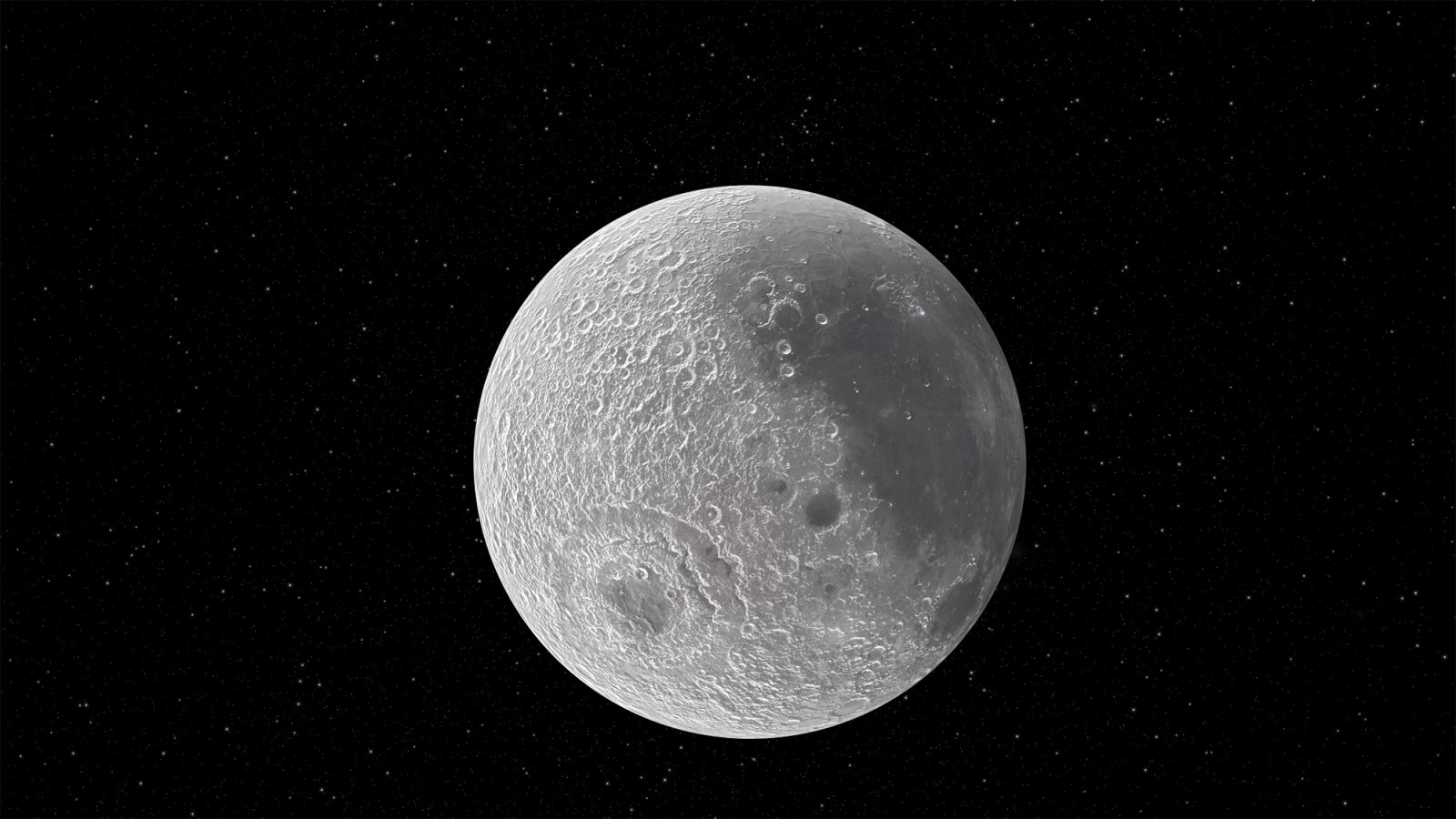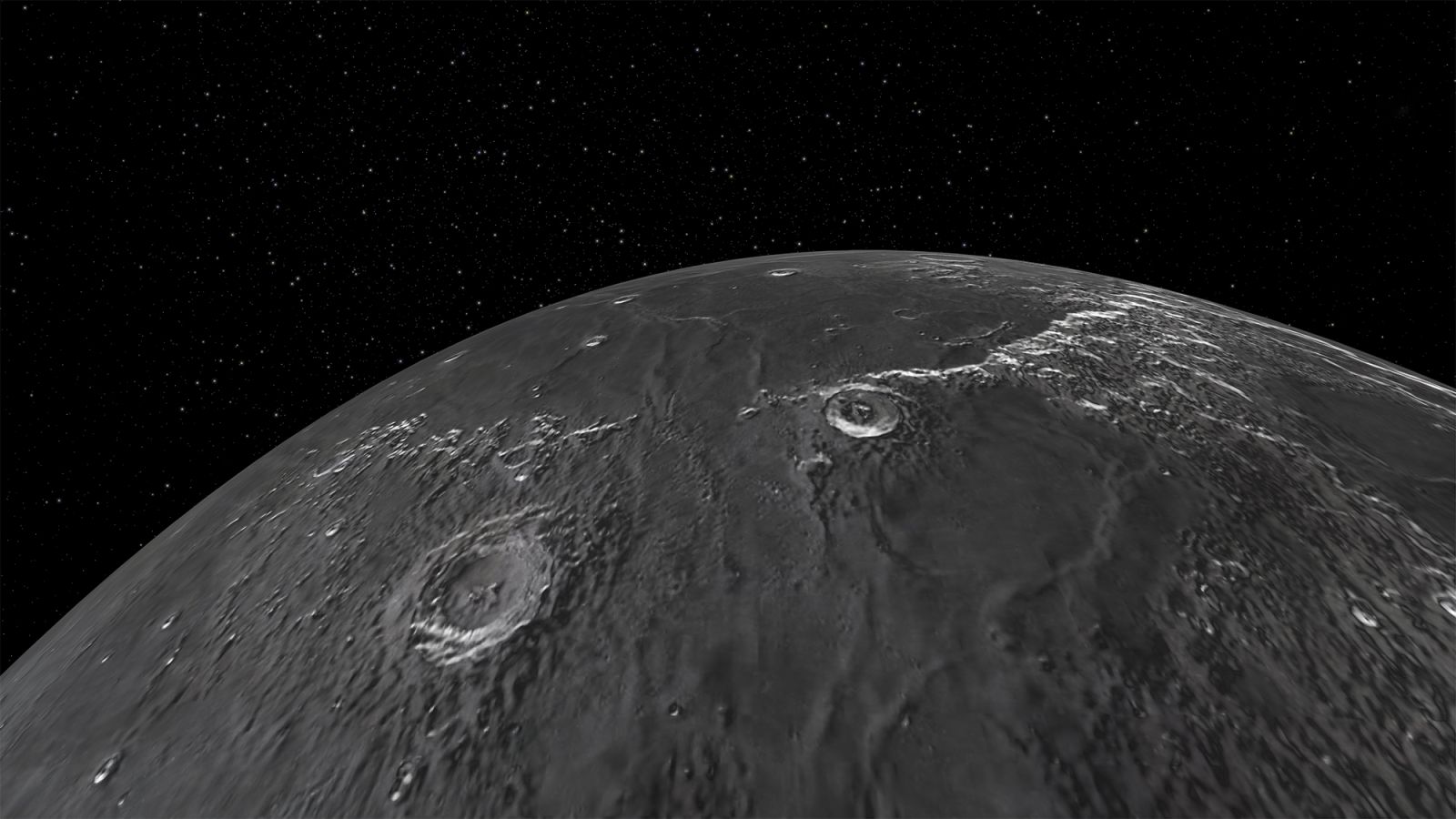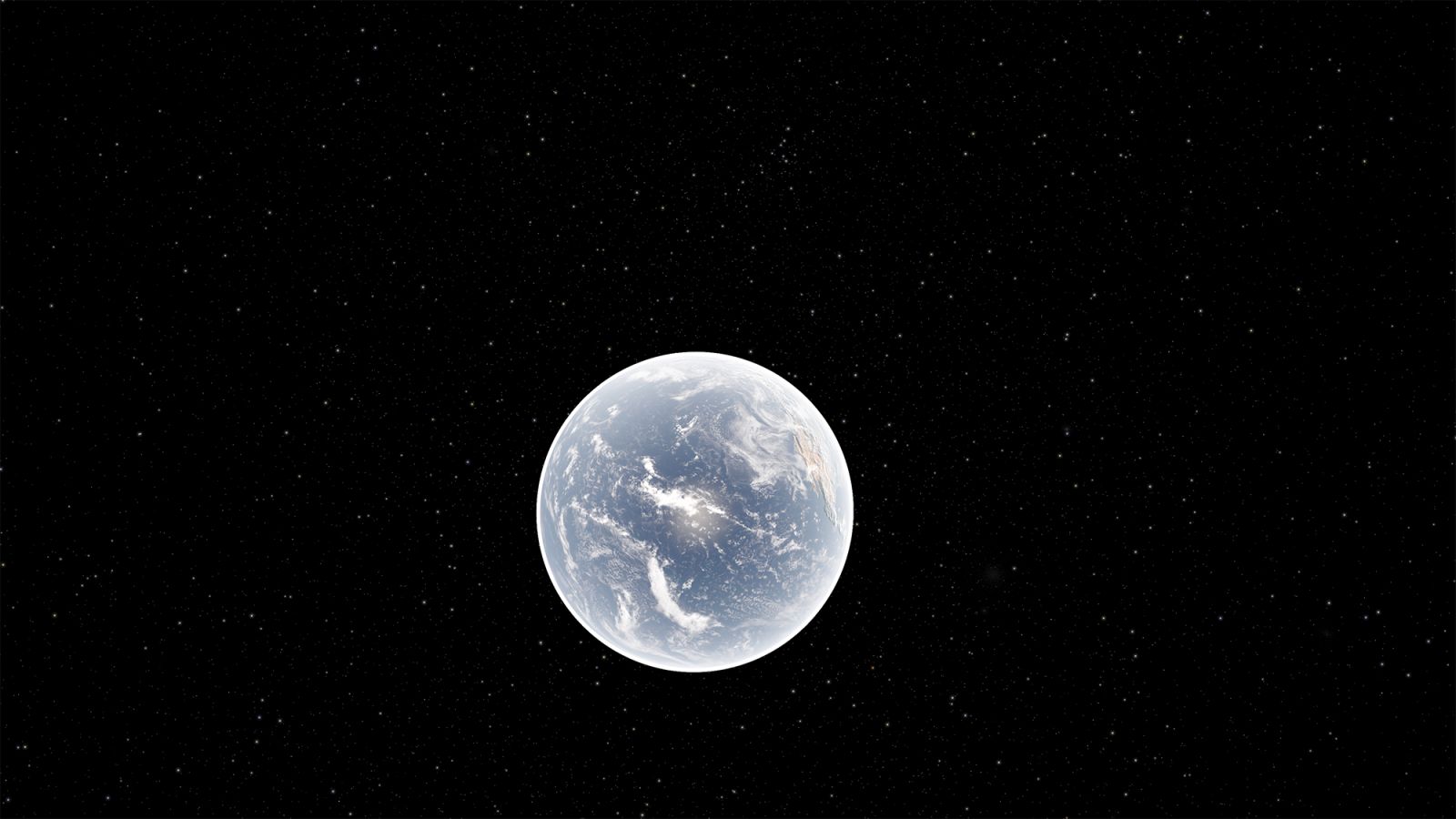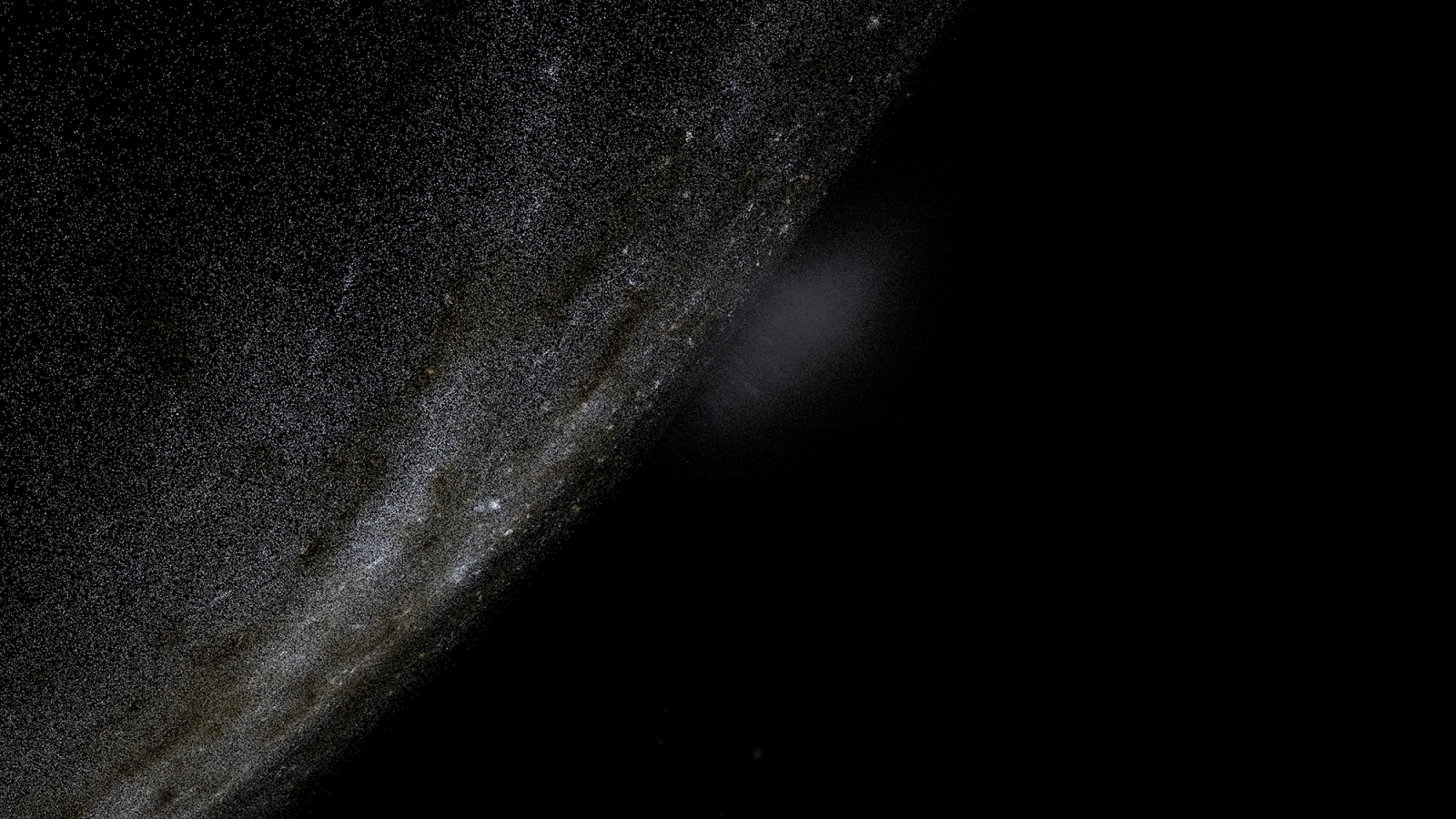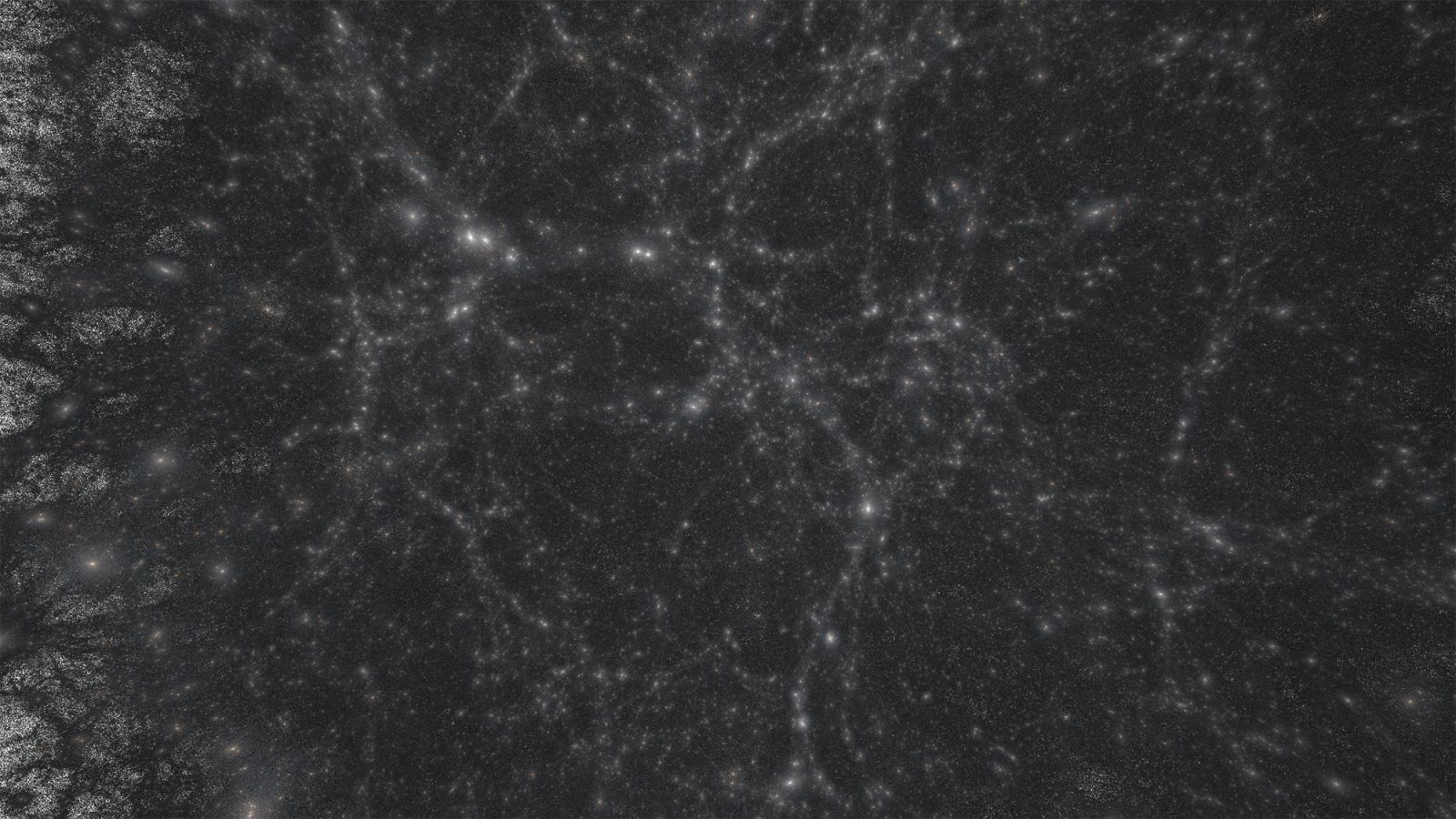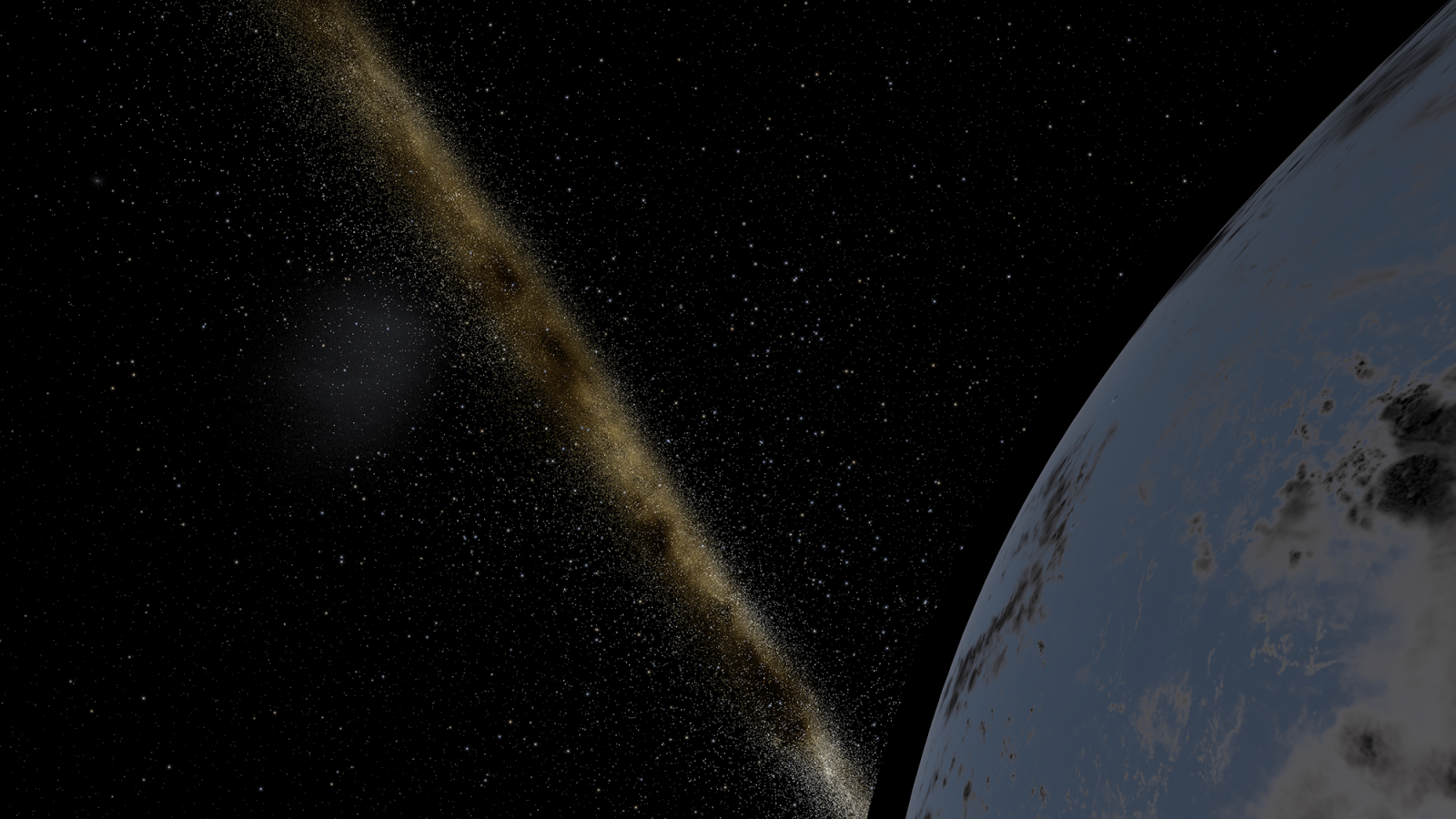LASTRO, eM+
Observation is at the heart of astronomy and yet the 20th century marked a shift away from directly looking at the cosmos toward processes of spectroscopic and radar detection. Even though sensors and telescopes “look” at the sky, much astronomical research now faces the paradoxical challenge of examining the Universe based on data analysis that requires making the numeric visible again.
In order to visualize this intangible data, EPFL’s LASTRO astrophysics laboratory inaugurated VIRUP: the Virtual Reality Universe Project. In a unique two-year collaboration with EPFL’s experimental museology laboratory, eM+, the cross-disciplinary team have created the first-ever fully immersive and interactive application to visualize and study the largest astronomical datasets available to science.
Projected onto two suspended circular screens for Cosmos Archaeology, Virtual Orbital Visit a set of short linear journeys extracted from VIRUP’s vast 3D model of the Universe. Captured with a virtual movie camera propelled through the model. sequences include a flyby of scientific renders of Earth’s moon and the larger the two moons of Mars, called Phobos. The AGORA galaxy simulation project then provides us with an ultra-high-resolution visualization of the Milky Way using state-of-the-art gravito-hydrodynamics codes widely used in the numerical galaxy formation community.
Another fundamental dataset, the Sloan Digital Sky Survey (SDSS) has been working for more than 20 years to make a map of the entire Universe through its Apache Point Observatory Galaxy Evolution Experiment (APOGEE) program. In Virtual Orbital Visit, we traverse the structures of stars in the outer Milky Way charted by SDSS’s “Field of Streams”, along with IllustrisTNG data, which reveal the cosmic filaments that make up the structure and chemical composition of our home galaxy.
Flying backwards through time and space, we see the cone-like perspective of SDSS’s data capture of a third of the cosmos, before finally reaching the outer limit of the detectable Universe at redshift 0.1, corresponding to roughly 1.3 billion light years from Earth.
